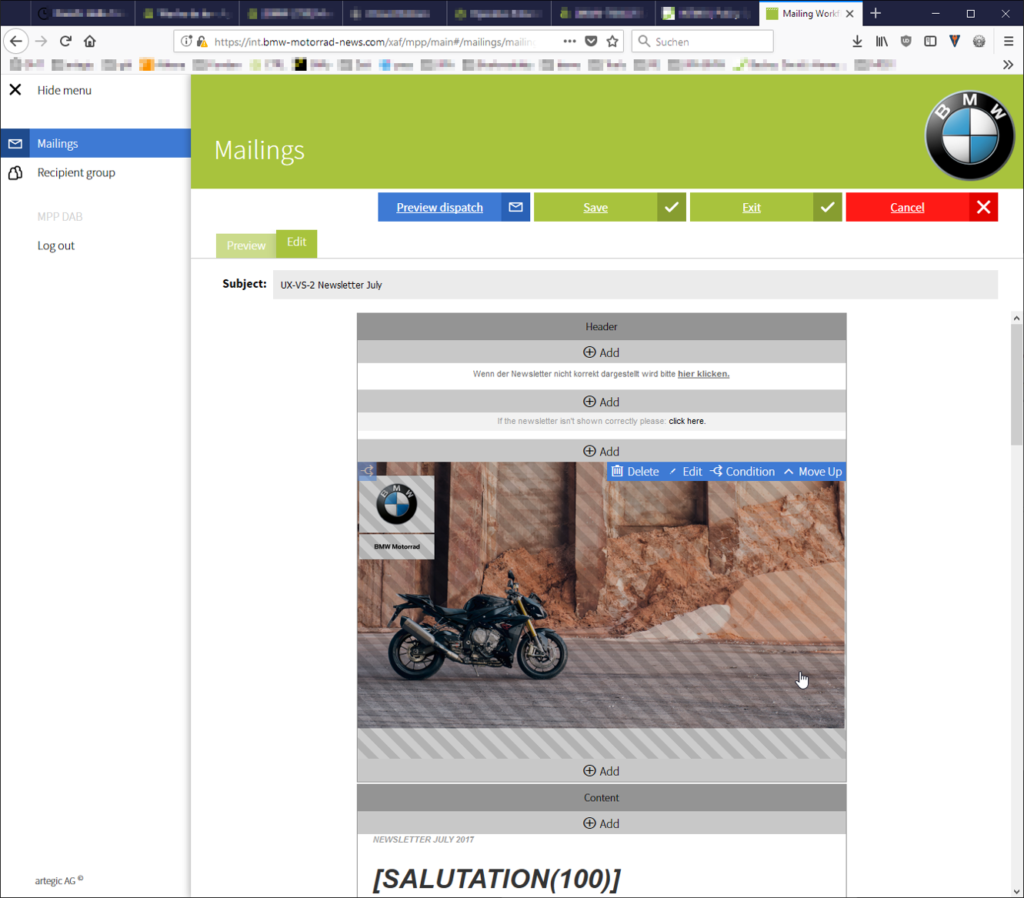The more stakeholders are involved in your email marketing, the more complex the coordination between them usually is. In addition to creating clear responsibilities or transparent processes, you can also reduce this complexity by using stakeholder-specific technology apps. There is a central technology, e.g. artegic ELAINE in email marketing, but not every stakeholder has access to all functionalities. Instead, you provide individual stakeholders with simplified interfaces via app, through which they can only perform their own tasks (e.g. content editing or approval/feedback) and do so particularly efficiently due to the focus.
The larger a company, the more stakeholders are involved in digital dialogue marketing on average. These stakeholders have different tasks. Some examples of different stakeholders that can be found under different names in the marketing departments of many companies:
- Designers: Create email templates and graphic elements, such as header graphics. They check the design of the finished e-mails before they are sent.
- Editors: Fill the email templates with content. Write texts for the subject line, copy text, headlines, call-to-actions, etc.
- (Email) Marketing Manager: Plans and designs campaigns. Creates marketing automations. Takes care of address acquisition and management.
- Decision-makers: Provide feedback on the “finished” email and give approval for sending. Receive reports after the campaign has run.
- Product owner: Takes functional and/or technical responsibility for the email marketing technology used.
- …
In addition, there may be stakeholders from other departments, e.g.:
- HR managers: Operate internal email marketing (onbarding routes, invitations and reminders for training measures, etc.).
- Sales managers (especially in B2B): Send their own emails to potential customers as part of lead nurturing and contact initiation.
- Support staff: Send e.g. appointment reminders, satisfaction surveys or FAQs by email.
- …
Futhermore, there may be stakeholders from other countries or company divisions, e.g. in companies that make marketing resources available centrally for different country markets or brands.
And that’s not all. In many cases there are also external stakeholders, such as:
- Agencies: Take over some of the operational marketing tasks, e.g. the creation of content for email marketing.
- Authorised dealers: Have direct contact with customers and send them campaigns adapted to local conditions.
- Partners: Promote their /en/en/en/en/en/products/services in your emails, for example, or run joint campaigns with you.
- …
All of these stakeholders not only have different tasks but also different levels of expertise in operating your email marketing technology. Not all of them need access to the full functionality of your email marketing technology.
Functional limitation and simplified interfaces
- Editors only get the mail editor, possibly even in a simplified version so that they cannot change the source text, for example.
- Decision-makers get a release button, a feedback mechanism and a statistics dashboard.
- Dealers get ready-made email campaigns that they can customise to a limited extent (e.g. regional offers at a grocery retailer or a test drive event at a car dealership) and send to their own customer base.
- …

Advantages of stakeholder-specific apps
Stakeholder-specific apps bring you a lot of advantages:
- Your stakeholders save time because they can concentrate on the essentials and have shortest possible click paths to the required functions.
- You need to invest fewer resources in training, since very few employees need to know the entire technology. For particularly simple apps, you may not need any training at all.
- Your stakeholders make fewer mistakes when using the technology and need less support.
- Less tech-savvy people can also be involved in the email marketing workflow.
- You can empower contractors, franchisees and other partners to do their own email marketing and get closer to the end customer.
- By integrating the apps with other systems (e.g. data analytics), you reduce time-consuming switches between different systems that require a lot of concentration.